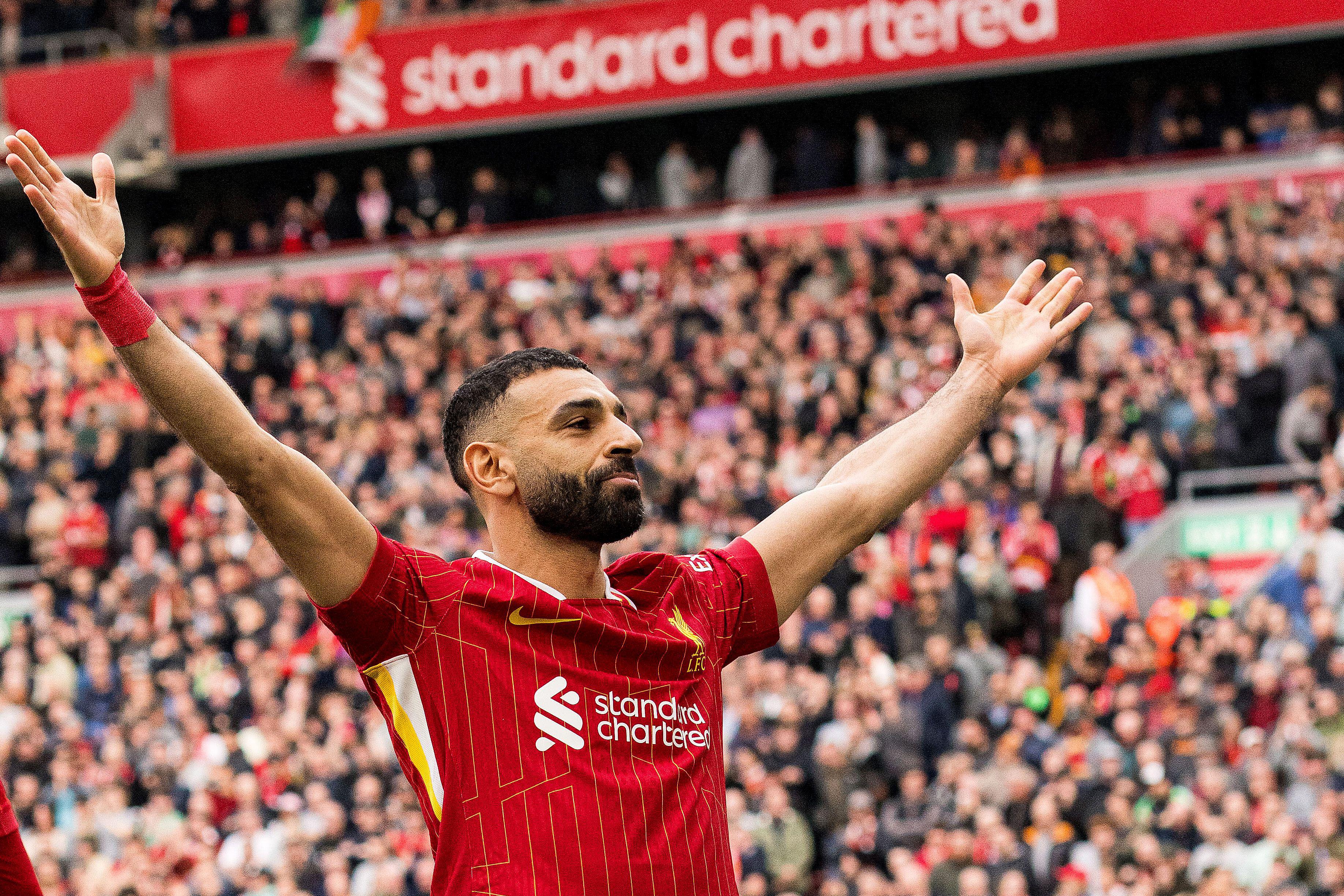Fans back in stadiums: The post-war football fandom boom in the late 1940s suggests the game will recover from the COVID-19 pandemic
Football fans haven’t been locked out of grounds for this long since the Second World War – when attendances rocketed as supporters reclaimed their beloved game. If this post-pandemic return is anything like that one, records will tumble
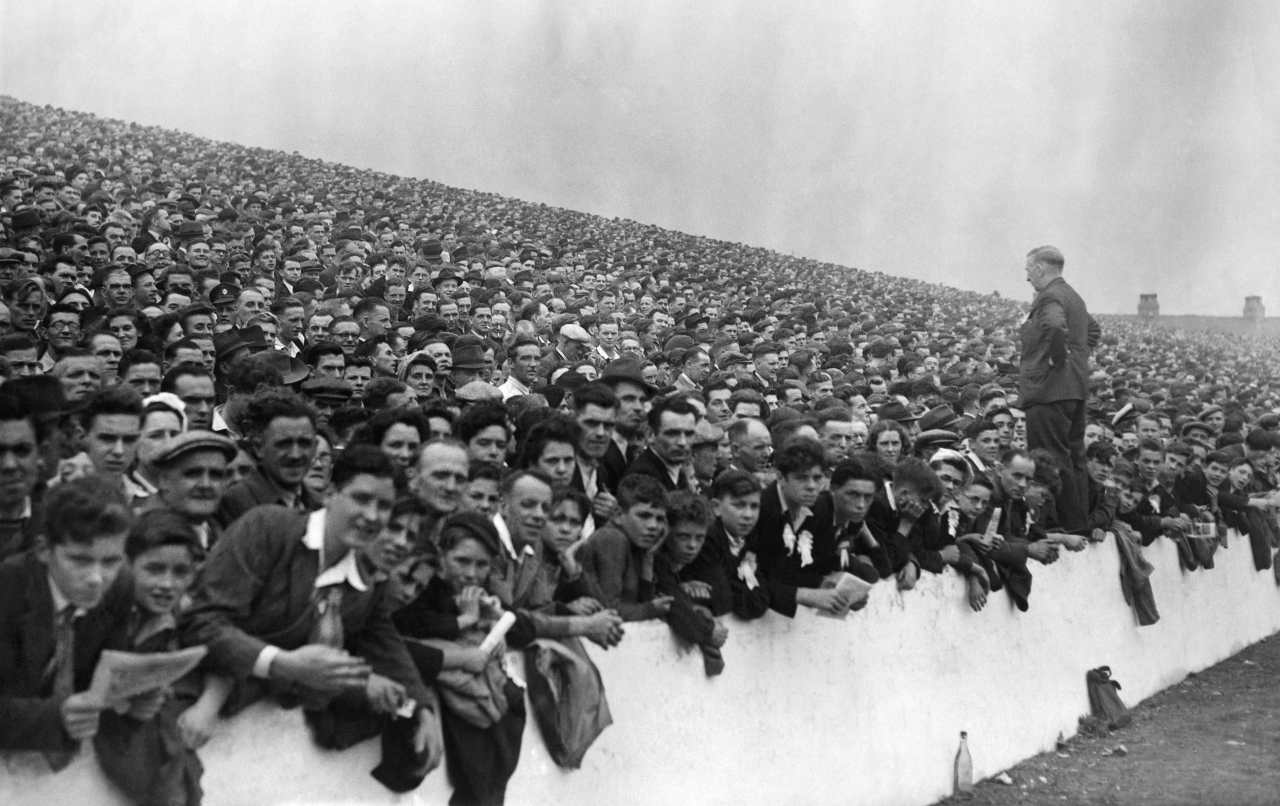
This feature on the post-war football boom first appeared in the August 2021 edition of FourFourTwo.
Order the new issue with free delivery here – just select 'Season Preview 2021' from the dropdown.
Subscribe to FourFourTwo today and save! You'll get 13 issues per year...
When fans return to football grounds this season, it won’t be the first time the sport has reopened its turnstiles to one and all following a tumultuous interruption.
In 1946, after the Second World War, fans flocked back to the game in unprecedented numbers, seeking a sliver of familiarity in a world forever changed. Travel restrictions, limits on gatherings and the compulsory carrying of masks – gas, rather than surgical – had become a way of life during the war. All of that could be set aside, even though the scars of conflict remained.
After seven long years without league football, supporters were desperate just to pack out their grounds, cheer on their teams and watch the game they loved. The last English Football League game had been played on Saturday, September 2, 1939. Blackpool beat Wolves 2-1 in front of 20,000 to move to the top of the First Division table.
The following day, Britain declared war on Nazi Germany. The Government closed all entertainment and sports venues, and the FA announced that all football was “entirely suspended”. However, they soon decided that a limited form of the game could help to boost morale and provide much-needed relief from the pressures of conflict, particularly during the eight-month Phoney War from that declaration until May 1940 and the German invasion of France and the Low Countries when there was little actual fighting.
Get FourFourTwo Newsletter
The best features, fun and footballing quizzes, straight to your inbox every week.
Wartime football was a substantially reduced version of the game; a way to schedule exhibition matches between makeshift sides with missing players. Teams were placed into 10 regional mini-leagues in England, with two in Scotland, but hundreds of footballers had signed up to join the fight. Some never returned to the football field.
Still, there was some excitement around the Wartime League games as players, freed from their contracts, were able to make guest appearances for other clubs. Tommy Lawton, 1938/39’s First Division top scorer for Everton, turned out for Leicester, Greenock Morton, Chester, Aldershot and Tranmere – the latter, on the same 1940 Christmas Day that he’d also played for the Toffees. Crystal Palace, meanwhile, used 168 wartime players in all.
But few fans were able to see Lawton’s like. Wartime attendances were relatively low, mainly due to public safety restrictions. With the Nazi Luftwaffe beginning its aerial bombardment of Britain, the authorities banned large crowds from gathering in congested areas. Football clubs had to obtain special permission from local police before opening their grounds, and attendances were initially limited to a maximum of 5,000 spectators. That was subsequently increased to 8,000, then 15,000 – 50 per cent of some grounds’ capacity. A 50-mile travel restriction prevented supporters from travelling to many away matches, while those who did were ordered to carry gas masks, which the government issued to every citizen.
Despite the falling bombs and terrible toll of the war, supporters filled grounds to their temporary limits. In April 1941, some 8,000 watched Sheffield Wednesday beat Sheffield United, while 7,500 saw Chelsea overcome Arsenal.
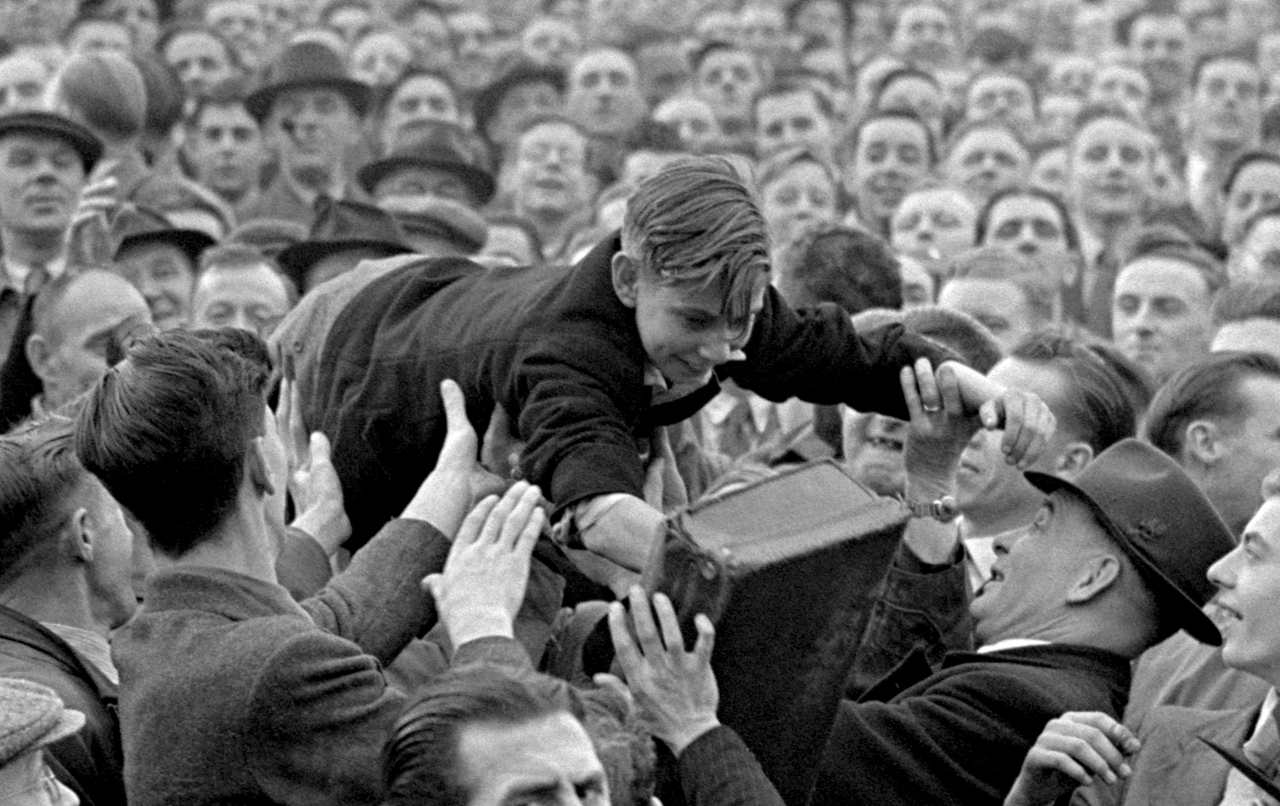
In May, Scotland and England even agreed to play a Wartime International at Hampden Park. The official limit was 50 per cent of the stadium’s capacity – then, the biggest in the world, at 150,000 – which meant that a 75,000-strong crowd enjoyed a 1-1 draw. Naturally there was anxiety over the size of the gathering, because Glasgow, with its shipbuilding works along the Clyde, was a target for Nazi bombers. Yet the experience was a positive one, providing much-needed respite for beleaguered fans. One reporter said the great roar emitted by the Hampden crowd was “like sweet music in the ears”.
While the standard of football on show was generally low, the sport did provide a helpful distraction during the most testing of times. It could be said to have done its bit for the war effort.
“Wartime football was no substitute for the real thing, but it did serve a purpose,” wrote England striker Tom Finney, who guested for Southampton during the conflict before he was called up to fight. “Football provided the country with some much-needed escapism, and it was thoroughly enjoyable – despite the bombs.”
In January 1946, four months after the end of the war, it was announced that a full league programme would be restored for the following season.
“The public stood gallantly by us during the war, and they shall be repaid for that loyalty as soon as possible,” one football administrator told the Yorkshire Post. To entice struggling fans back to league games, the FA and Football League ordered that standard admission prices should be reduced to one shilling and three pence (equivalent to around £2.70 today). However, some clubs – starved of proper income for the duration of the war – limited the number of standard admissions available and hiked up other ticket prices to avoid losing gate money.
Fans grumbled, yet still they turned up in greater numbers than ever before.
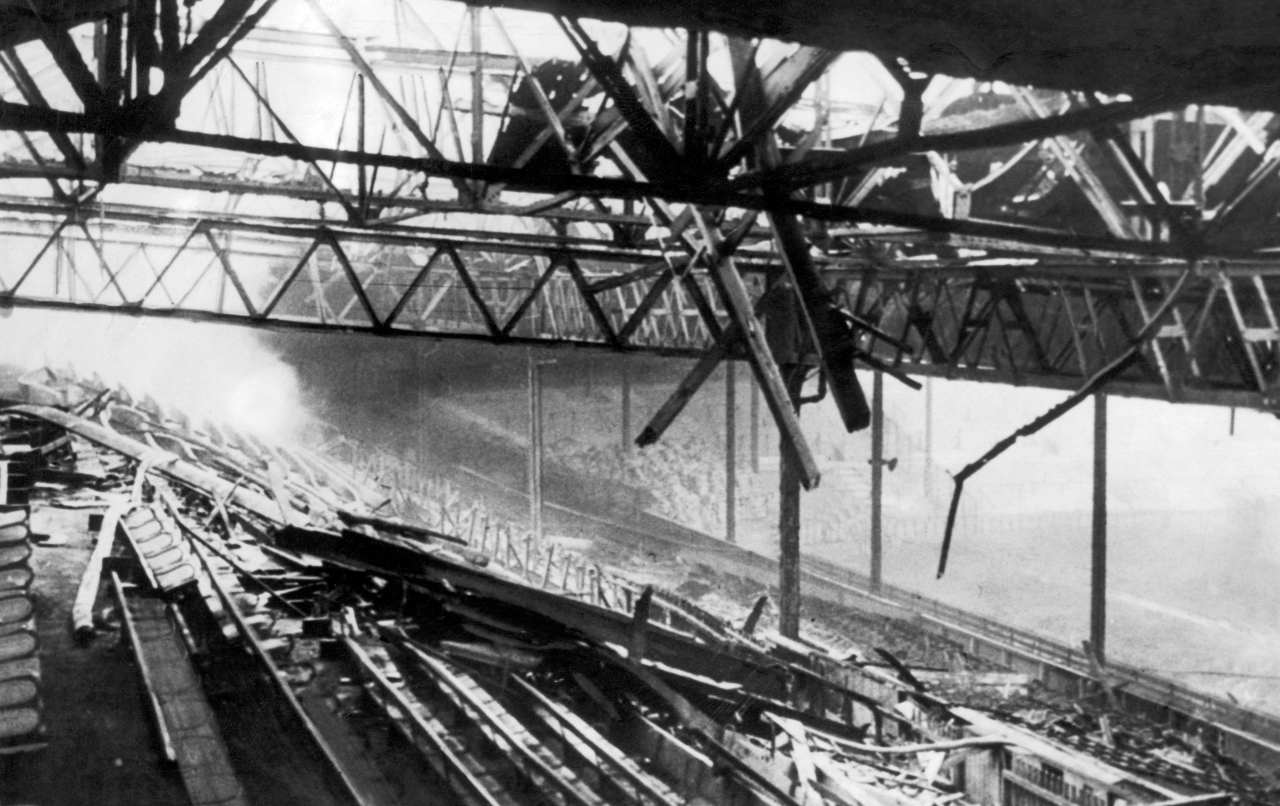
The football to which they returned, however, looked very different to the football they’d left. Every team in the league needed to be rebuilt, as did many grounds. Players had been injured or killed, or simply grown too old during the seven-year gap to resume their careers. New stars had emerged via the wartime leagues, but there was still a shortage of players. Meanwhile, grounds had been pummelled by the Luftwaffe or requisitioned for the war effort, and a shortage of money and materials meant that repairs weren’t easily arranged.
Old Trafford was severely damaged in the air raids of 1940 and 1941 (above), forcing Manchester United to take up temporary residence alongside Manchester City at Maine Road until 1949. Stamford Bridge, Bramall Lane and Roker Park were also heavily shelled. St Andrew’s was struck by 20 bombs, and the grandstand burned down when a fireman accidentally tried to dampen down a blaze with petrol.
Grounds that had been requisitioned as physical training centres, air raid stations or storage depots had to be restored to their former purpose. Highbury was requisitioned and bombed during the war, so Arsenal played their wartime matches at White Hart Lane. Many grounds were stripped of railings and other metal fixtures and fittings in order to assist the war effort, while some clubs were unable to reopen their turnstiles – because they’d been ripped out.
Ahead of the 1945/46 league season in England, an FA Cup competition was hastily arranged – the first competitive post-war football tournament. Unusually, rounds before the semi-finals were contested over two legs, to provide additional revenue for cash-strapped clubs. Huge crowds of football-starved fans attended. Tragically, however, this deluge of interest – combined with the unsuitability of many war-damaged and neglected grounds – led to one of British football’s worst ever disasters.
On March 9, 1946, up to 80,000 supporters crammed into Burnden Park for an FA Cup tie between Bolton and Stoke. The ground’s supposed capacity was 69,500, but it was in such disrepair following the war that it couldn’t hold anywhere near that number of people. The resulting crush killed 33. At the time, newspapers called it “the worst football crowd tragedy in British history”.
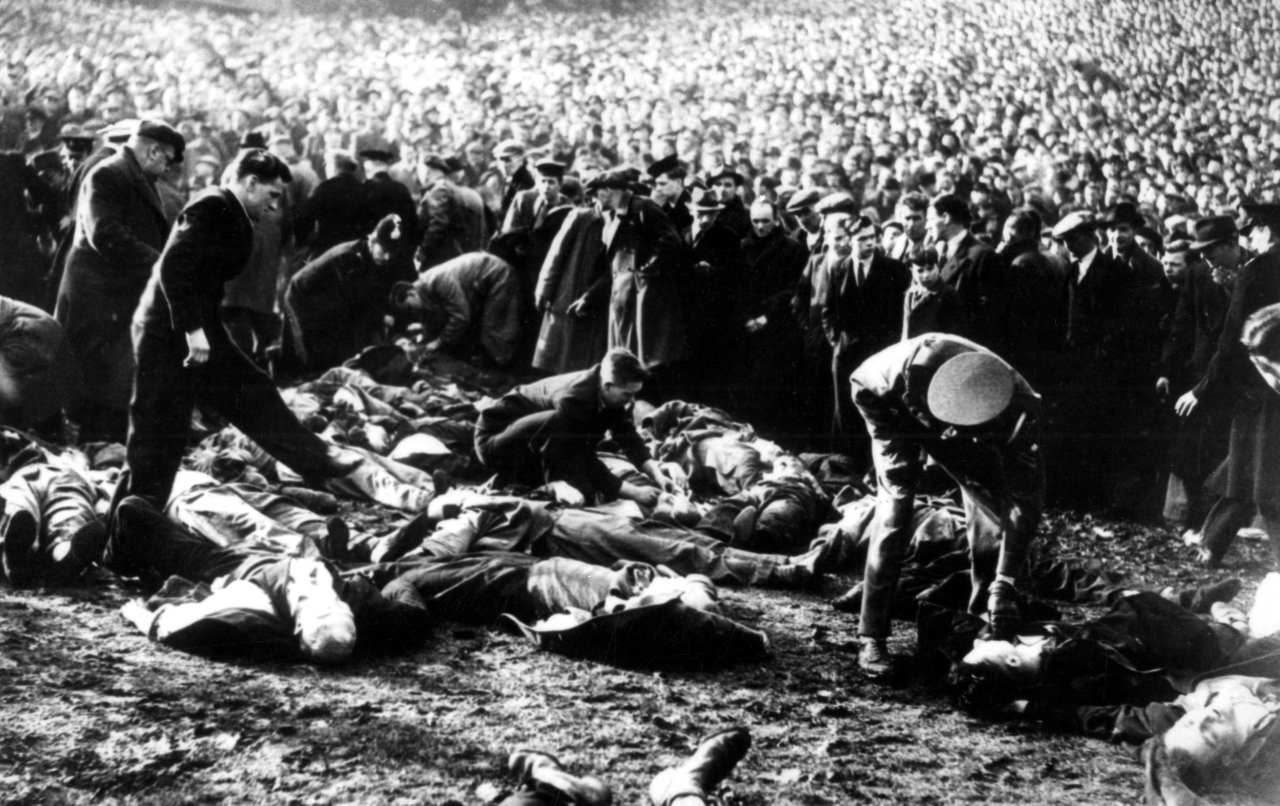
Nonetheless, when league football resumed in August 1946, fans flooded back even in torrential rain. Nearly a million people attended the 43 opening-day matches in England, with five of the 11 First Division games attracting gates of 50,000-plus, and 61,464 watching Chelsea defeat Bolton at Stamford Bridge.
In Scotland, the trend continued. Rangers welcomed back 50,000 supporters for their first home game in 1946/47, compared with 15,000 in their final pre-war match of the curtailed 1939/40. Celtic had 33,000 at their comeback fixture, compared with 5,000 before. In January 1947, a crowd of 85,000 watched an Old Firm clash at Ibrox.
“If the sun did not welcome footballers in the traditional manner,” reported The Times, “enthusiasm for this new and most important of seasons was greater than ever.”
The long gap between league seasons meant that some fans had forgotten which teams were in which division. Blackburn and Sheffield United had been promoted at the end of the 1938/39 campaign and belatedly took their place in the First Division for 1946/47, alongside the likes of Grimsby and Brentford – who were relegated at the end of the season, not returning to the top flight until 2021. Manchester City, Tottenham and Leicester were in the Second Division.
“Nobody could be expected to remember that sort of thing for seven years,” argued The Times, “and the rediscovery involved several mild shocks.”
Fans scanning their match programmes on opening day were presented with unfamiliar line-ups. Teams up and down the country had been rebuilt, leading to an unpredictable and uneven season. Reigning champions Everton slid into mid-table, Arsenal laboured in the bottom half, and Manchester United and Liverpool – unfancied strugglers before the war – challenged for the title. When Liverpool were crowned champions, just two points separated them, United, Wolves and Stoke.
Ultimately, though, the match results and league standings seemed less important than the high attendances, which continued throughout the season. This was despite the arrival of a brutal winter that decimated the fixture list, causing more than 140 matches to be postponed and the season to be extended by eight weeks into mid-June.
The total number of fans who attended Football League matches in the 1946/47 season was 35.6 million – significantly higher than the pre-war figure of 27m for 1938/39. Second Division Newcastle were now the best-supported side, with an average attendance of 49,379; Liverpool had the highest top-flight average, with 45,732. As one commentator remarked, “Newcastle could probably fill their ground whatever price they cared to charge for admission, and Liverpool could do so if they were playing the blind school at water polo.”
In many ways, the post-war era would come to be the golden age of the football fan. Attendances continued to rise – among others, Manchester United, Aston Villa and Everton chalked up record crowds during the post-war boom. United’s record still stands: a crowd of 81,962 watched a draw with Arsenal in January 1948, albeit at Maine Road and not the bombed-out Old Trafford.
The aggregate attendance for Football League games in 1948/49 was 41.3m – an increase of 14.3m compared with 1938/39. On October 16, 1948, a record 1,167,446 people rocked up to the 44 league games. The average top-flight attendance in the 1948/49 season was 38,792; this has never quite been matched, even in the Premier League era. The average attendance across all four divisions was 22,318 – another record yet to be beaten. By comparison, the average attendance in the last ‘normal’ English league season, 2018/19, was 38,181 in the Premier League and 16,168 across all four divisions – though it could all change for the top flight this year, as the well-supported pair of Leeds and Aston Villa have since replaced the likes of Bournemouth and Fulham.
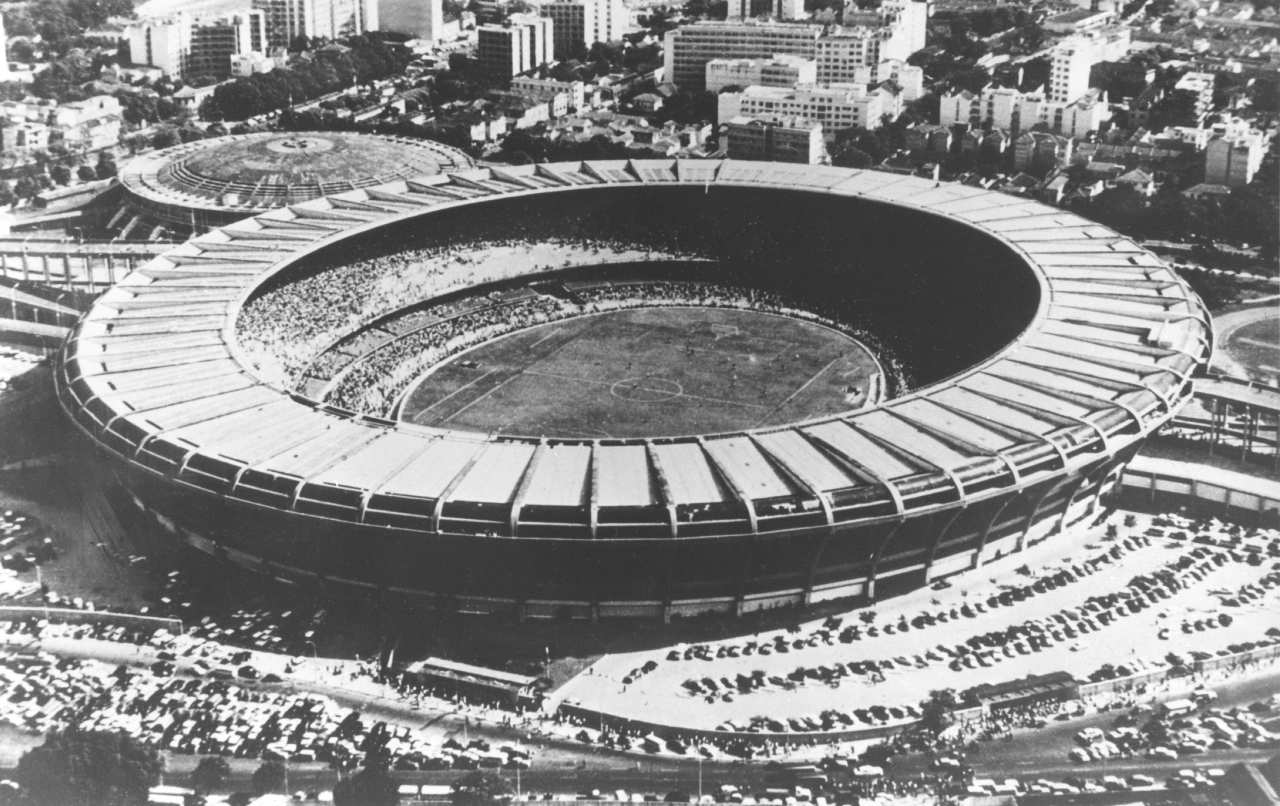
The upward trend in attendances was repeated around the world. Football fandom truly peaked at the deciding match of the 1950 World Cup – effectively the World Cup final – between Uruguay and the hosts, Brazil. It was played on July 16, 1950 at Rio’s newly-built Maracana stadium (pictured above), the biggest football ground in the world. Up to 200,000 spectators crammed in to watch Uruguay win 2-1, although only 173,850 had paid for tickets. Guinness recognises the official figure of 173,850 that witnessed Maracanazo as the world record for the largest ever attendance at a football match.
Football’s post-war golden age saw attendances peak at an all-time high, then gradually decline, with numbers bottoming out during the doldrums of the 1980s. They have, however, climbed steadily since the 1990s. With pandemic restrictions lifted this summer, safety restrictions remain – and ultimately, attendances are limited by the capacities of stadiums. Premier League clubs will expect their grounds to be filled throughout the coming campaign, if virus variant waves allow, but the appetite of fans to get back to football – to just be fans again – should benefit clubs at all levels.
Might the post-pandemic return bring new attendance records, 75 years after football’s post-war return? In the interrupted 2019/20 season, when fans were locked out with little more than a third of games left to play, the Premier League’s average attendance was 39,349. Had subsequent matches not been played behind closed doors, it could have been a record-breaking season. Average attendances were also reaching record levels across Europe before the pandemic struck.
The bleak 2020/21 season was played almost entirely without spectators, but now the turnstiles are open again. If 2021/22 remains restriction-free, the enthusiasm for a return to football, amplified by the feelgood factor of the delayed Euro 2020, could result in attendance figures smashed at clubs and in leagues around the world.
Football’s fans are coming home.
Paul Brown is the author of ‘Savage Enthusiasm: A History of Football Fans’
Subscribe to FourFourTwo today! Guarantee the finest football stories and interviews dropping on your doorstep first every month.
NOW READ
RETRO The Burnden Park Disaster remembered, by those who were there
QUIZ Can you name every English champion, FA Cup winner and League Cup winner?
PAT NEVIN “My nickname was ‘Weirdo’ for a long time. I was always thinking, ‘Oh, no I’m the normal one…”
